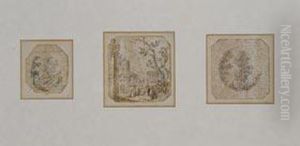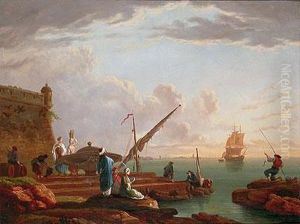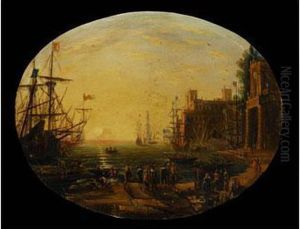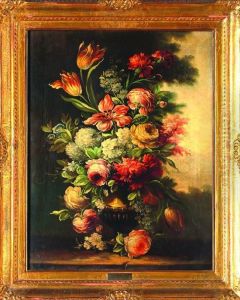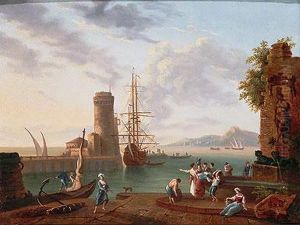Claudio De Lorena Paintings
Claude Lorrain, originally known as Claude Gellée and commonly referred to in English as Claude of Lorraine, was born in 1600 in the Duchy of Lorraine (which was then part of the Holy Roman Empire and is now in France) and later moved to Rome, where he spent most of his life. His birthplace gave him the name by which he was known, as 'Lorrain' refers to that region. He was orphaned by the age of 12 and went to live with his older brother, a woodcarver, in Freiburg im Breisgau. It is believed that he trained as a pastry chef before turning to art.
Claude never married and lived a modest, almost reclusive life, though his studio was highly productive. He was known for his evocative landscapes that often included classical ruins and pastoral figures, suffused with a golden, ethereal light. He was a key figure in establishing the idealized landscape genre that would influence many generations of artists, including the Romantics and the Hudson River School.
Claude developed a unique method of recording his paintings, a practice that was not common at the time. He kept a book, now known as the 'Liber Veritatis' (Book of Truth), a collection of drawings that recorded his completed works to guard against forgeries. This practice was an early form of catalog raisonné and shows his concern for the legacy and authenticity of his work.
Lorrain's influence extends beyond painting, as his work has been cited as an inspiration in literature and music, particularly in the Romantic period. He had a profound impact on the development of landscape painting, and his works are characterized by their serene, harmonious qualities and their poetic rendering of light. Claude died in Rome on November 23, 1682. His landscapes remain highly prized for their visionary portrayal of an ideal classical antiquity and continue to be studied for their innovative composition and lighting techniques.
